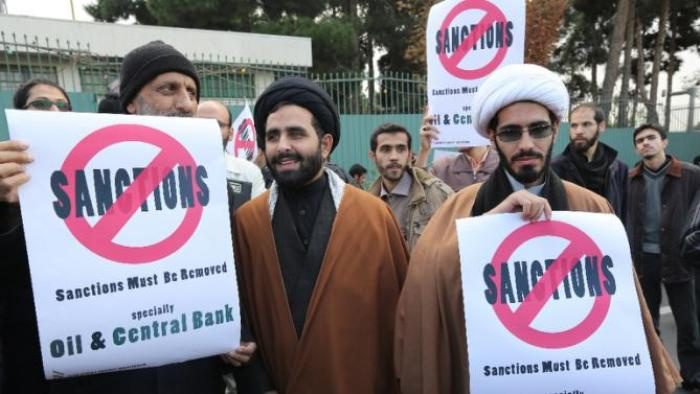What We Talk about When We Talk about ’Sanction Beneficiaries’?

Last Wednesday, pro-Rouhani media outlets quoted chief of Iran’s Central Bank Valiollah Seif as saying that the nuclear deal has paved the ground for Iran to gradually return to the international scene, double its oil exports, and directly work with foreign firms. Speaking to a ‘resistance economy headquarters’ summit held in the southern province of Kerman, Seif contrasted the new achievements with the pre-deal era in which “sanction beneficiaries” had devoured 15 percent of Iran’s foreign trade, a reference to Ahmadinejad’s second term as Iran’s president.
Critics of the Rouhani administration emphasize that his cabinet has developed a habit of blaming every problem in the country on its predecessor, the Ahmadinejad administration. Apart from partisan competitions that may be involved, the truth is that the seemingly irreparable damage to Iran’s economy under the oppressive sanctions was equally caused by domestic corruption and mismanagement.
On Monday, an article written by Negar Ahmadi appeared on Khabar Online, also a pro-Rouhani news agency, which did the math to figure out how much each Iranian individual had lost on average throughout the four years the article called "years of intensified sanctions". In her explication of Seif’s remarks, Ahmadi writes that Iran has spent $115 for every $100 of international transactions, which increased the costs of imports and exports at the same time, reducing, in turn, the economy’s competitiveness.
The article estimates that sanction beneficiaries have pocketed $89.4 billion out of foreign trade in oil and non-oil imports and exports worth $596 billion, while Iran had difficulties to import food, medicine, and basic goods. The period concerned or the sources used for the estimation are not named. However, these figures provide the basis for the article to go on calculating what this could mean for Iranians.
In order to shed light on the magnitude of the figure, Ahmadi puts it in contrast with Iran’s oil revenues in the last Persian calendar year (March 21, 2015 to March 19, 2016), which only amounted to $33 billion.
According to her article, the administration’s sovereign debt, which stands somewhere between 500 to 600 billion tomans (approximately $160 to $190 billion), turned out during the same years when oil prices were at record highs. The amount embezzled by sanction beneficiaries could settle nearly half of the debt.
Half-finished construction projects need the injection of credit worth $127.5 billion and the embezzled chunk could provide for up to 67 percent of it, according to Kahabar Online. Saying that it takes $32 to $47 billion invested on construction projects to create 800 thousand jobs, the article concludes that the worth of 1.6 million jobs are in the pockets of a small part of the society.
Elsewhere in the article, an analogy is drawn between the development of Qatar’s North Dome and Iran’s South Pars. Ahmadi estimates the maximum cost for the development of each South Pars phase to be $4 billion and notes that the embezzled money could suffice to finance 22 phases, several times more than the credit needed to finish the development of the gas field.
The article goes on to say the money could finance the development of 89 airports similar in size to Imam Khomeini International Airport.
Finally yet importantly, the article divides the $90 b to the Iranian population of more than 78 million, the result of which is $1153 for each individual in the four years. This comes to light if the minimum wage of about $250 is taken into account. Under the targeted subsidy plan, already a burden for the administration, each individual receives $14.5 per month.

